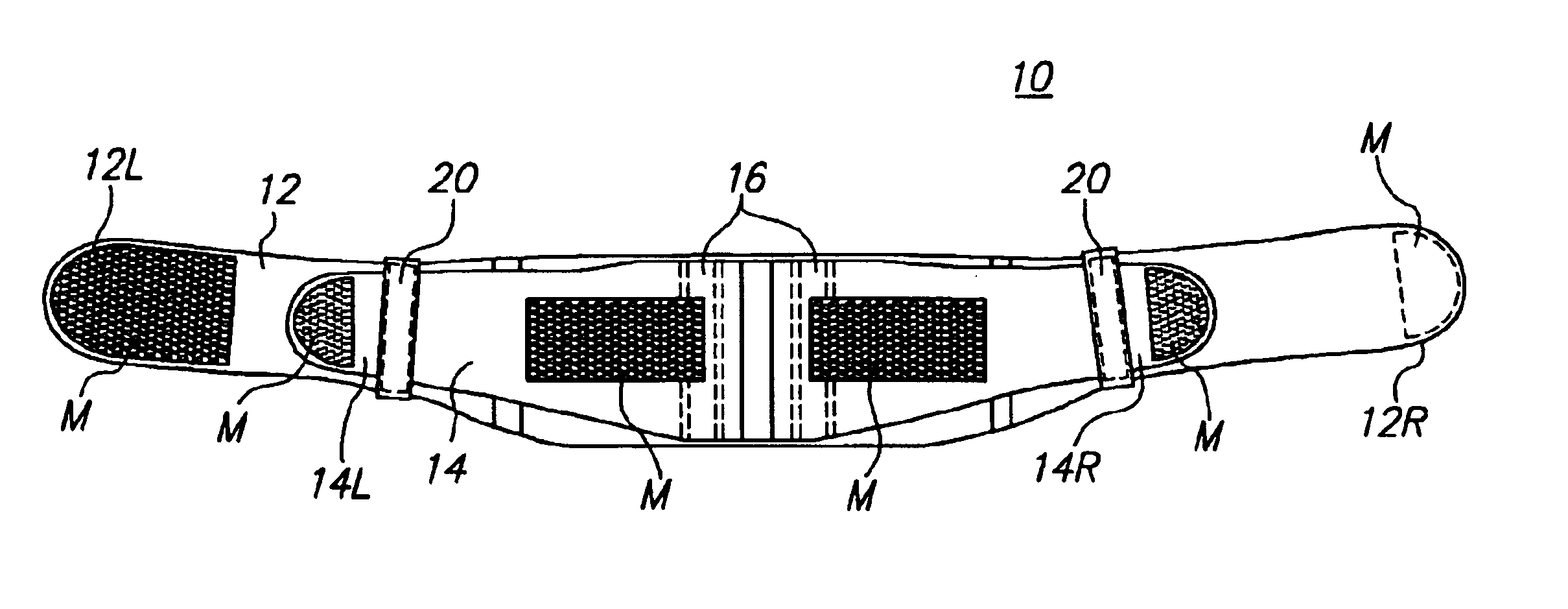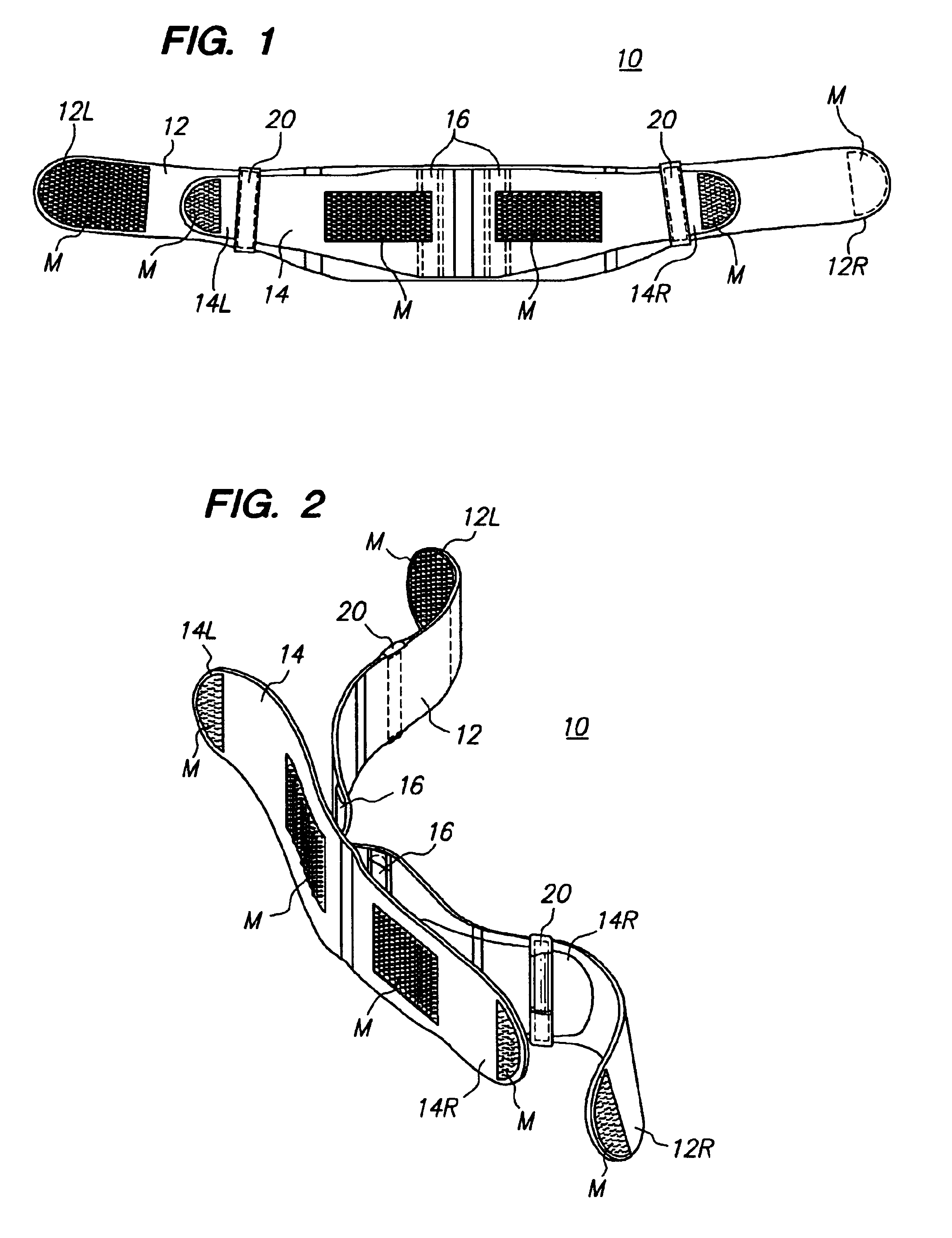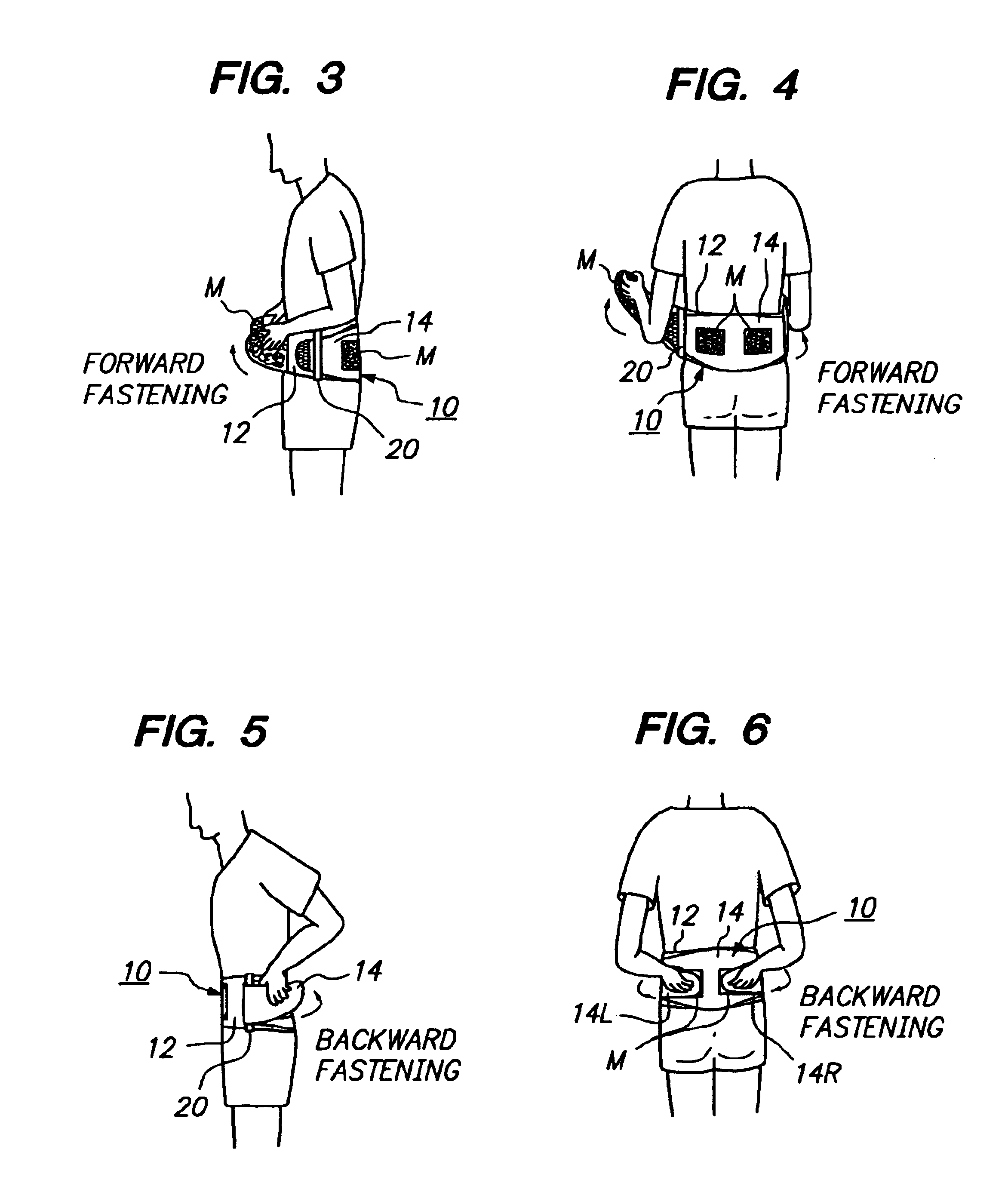Belt-like corset
a belt-like corset and belt-like technology, applied in the field of belt-like corsets, can solve the problems of direct medical costs for low back pain, no benefit of corsets, and no previously known corsets for contractile anterior to posterior
- Summary
- Abstract
- Description
- Claims
- Application Information
AI Technical Summary
Benefits of technology
Problems solved by technology
Method used
Image
Examples
example 2
Twenty-three (23) patients were diagnosed with muscular lumbago by the inventors, orthopaedic surgeons. Among them, persons having an odd numbered birth date (12) are assigned to the extensile corset (10) group and persons having an even numbered birth date (11) were assigned to the conventional corset.
A change in the forward bending degree was measured in the 23 patients. FIG. 11 compares a patient wearing the conventional corset and wearing nothing. Here, the forward bending degree in decreased and the spine was moved anteriorly.
FIG. 12 measures the change in the forward bending degree similarly using the extensile corset (10) of the invention. By wearing the corset (10) of the invention, the forward bending degree is increased and the spine was moved posteriorly. By moving the spine posteriorly, the stoop is rectified, the breast is spread and the posture is improved.
Numerically speaking, whereas in the group of the conventional type, the lumbar forward bending degree is 9.9.+-.6...
example 3
The inventor studied the use of the belt-like extensile corset in centrally obese and non-centrally obese participants and reported significant improvement concordant with maintenance of the lumbar lordosis, suggesting that lordotic seated posture is more likely to alleviate low back pain in this population. Waist-hip ratio was used to evaluate central obesity. Males with a waist-hip ratio over 90% and females with a ratio over 80% were considered obese. An advantage of using this measurement is that, whereas body mass index ranges differ among racial groups (e.g. Japanese and Caucasian), definitions of central obesity by waist-hip ratio remains consistent. Kameda T, Ito M, Chun W, et al, 9 OFFICIAL JOURNAL OF THE JAPANESE SOCIETY OF HUMAN DRY DOCK 31-6 (1994) (in Japanese), Perry A C, Miller P C, Allison M D, et al, 68 AM J CLIN NUTR 1022-7 (1998).
Lumbosacral corsets with tension from front to back according to this invention were assembled to evaluate for symptomatic and anatomic ...
PUM
 Login to View More
Login to View More Abstract
Description
Claims
Application Information
 Login to View More
Login to View More - R&D
- Intellectual Property
- Life Sciences
- Materials
- Tech Scout
- Unparalleled Data Quality
- Higher Quality Content
- 60% Fewer Hallucinations
Browse by: Latest US Patents, China's latest patents, Technical Efficacy Thesaurus, Application Domain, Technology Topic, Popular Technical Reports.
© 2025 PatSnap. All rights reserved.Legal|Privacy policy|Modern Slavery Act Transparency Statement|Sitemap|About US| Contact US: help@patsnap.com



